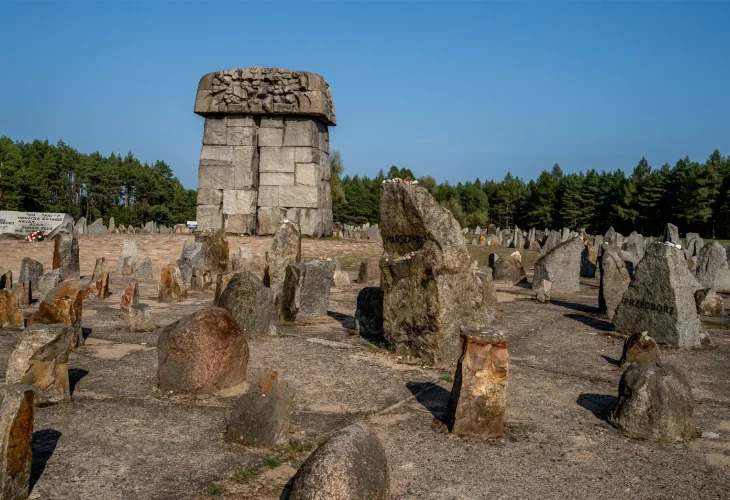The Holocaust
The Treblinka Uprising: How Jewish Prisoners Fought Back Against the Nazis
Despite starvation, fear, and brutality, Jewish prisoners staged an uprising that destroyed the camp and left an indelible mark of defiance
 Treblinka (Photo: Shutterstock)
Treblinka (Photo: Shutterstock)The Nazi concentration camps were meticulously designed as part of a systematic plan to strip Jews of every spark of independence, initiative, or resistance. It was nearly impossible to rebel against the Nazi guards, and every small act of defiance was met with brutal collective punishment. Jews arrived at the camps after days of starvation and months of hiding and oppression, caught in a well-oiled system of deception.
Despite this however, there were uprisings. Beyond the famous Warsaw Ghetto Uprising, there were also revolts inside the camps themselves. One of the most notable, and relatively successful, was the uprising at Treblinka.
Treblinka: A Camp Built for Annihilation
Treblinka was established near the Polish town of the same name, about 80 km from Warsaw. Its sole purpose was the extermination of Jews. The vast majority were murdered through horrific means, while a small minority were forced to loot belongings and dispose of corpses. In this way, about 800,000 Jews were killed.
The camp itself had been built by Jewish forced laborers, and Jews were compelled to run its machinery of death and plunder. For about a year, mass exterminations were carried out while around 200 Jewish prisoners were forced to maintain the system — supervised by only about 40 SS officers.
Rebellion was nearly impossible. Jews were herded helplessly between rows of SS men and Ukrainian guards armed with automatic weapons and attack dogs. Any attempt at defiance was crushed with savage reprisals. In September 1942, one Jew stabbed and killed SS officer Max Biale with a smuggled knife. In retaliation, the Nazis murdered 150 Jews, terrifying others from rising up for fear of collective punishment.
Planning the Revolt
Despite the danger, three men spearheaded a revolt: Zelomir Bloch, a former Jewish officer in the Czechoslovak army; Moshe Lubling; and Zvi Lubkind from Częstochowa. Sixty other prisoners secretly joined them.
The rebels seized the German weapons depot and cut the camp’s telephone lines to prevent reinforcements from being summoned. Although they failed to cut off electricity before the uprising was discovered, they fought heroically — killing many Nazis and Ukrainian guards, breaking through the camp fences, and fleeing into the surrounding forests.
About 200 prisoners escaped, while around 130 were shot or betrayed by local Poles. Only 70 survived the war.
The Nazis Cover Their Crimes
During the uprising, the camp was set ablaze. To erase evidence of their crimes, the Nazis forced the remaining Jews to dismantle the camp entirely and destroy the killing facilities. Afterward, all surviving prisoners were executed, and a Ukrainian farm was built on the site to conceal what had taken place.
Of all the Nazis who ran the camp, only five were ever sentenced to life imprisonment. The first camp commandant, Imfried Eberl, committed suicide.
Among Treblinka’s perpetrators was a particularly sadistic Ukrainian guard known as “Ivan the Terrible.” He was extradited to Israel about forty years ago, but the court acquitted him due to doubts about his exact identification.

